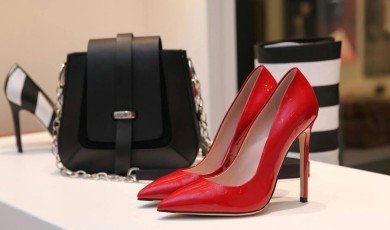
The fashion industry is moving faster than ever, and brands that don’t adapt risk being left behind. Emerging technologies are transforming how collections are designed, marketed, and sold—and in this rapidly evolving landscape, data-driven automation is becoming the new competitive edge. From trend forecasting to personalized shopping journeys, digital solutions are reshaping how labels connect with modern consumers who expect relevance, speed, and seamless experiences across every channel.
Instead of relying solely on intuition or manual processes, fashion businesses are increasingly turning to specialized AI tools that help them understand shoppers, optimize campaigns, and make smarter decisions at scale. These platforms don’t just save time—they uncover insights hidden in customer behavior, social conversations, and performance metrics, helping brands deliver the right message to the right person at the right moment.
1. Hyper‑Personalized Shopping Experiences at Scale
Shoppers now expect every interaction with a brand to feel tailored to them. Advanced recommendation engines analyze browsing history, purchase behavior, wish lists, and even micro-interactions such as time spent viewing a product to deliver ultra-relevant product suggestions.
This technology powers features like “Complete the Look,” dynamic product carousels, and individualized homepages. By using real-time data, brands can present outfits that match a customer’s style, size, and budget—boosting conversion rates and average order value while reducing choice fatigue. Over time, these systems learn and refine their suggestions, steadily improving both engagement and loyalty.
2. Smarter Trend Forecasting and Assortment Planning
Successful collections depend on anticipating what customers will want next season—not just reacting to what sold last year. Predictive analytics tools scan vast amounts of information, including search queries, social feeds, runway coverage, and historical sales data, to reveal rising patterns in colors, silhouettes, fabrics, and price points.
By turning this complexity into clear forecasts, fashion brands can adjust assortments before committing to production. They can confidently decide which styles to scale, which to test in smaller batches, and which to drop entirely. This reduces overstock, markdowns, and waste, while ensuring that the pieces on the rack match what customers are already looking for online.
3. Dynamic Pricing and Promotion Optimization
Static pricing strategies are losing effectiveness in a world where demand can spike or drop within hours. Automated pricing engines evaluate product performance in real time—considering sell-through rates, competitive pricing, seasonality, inventory levels, and customer interest signals—to recommend or apply price adjustments.
Instead of across-the-board discounts that erode margin, brands can use granular rules: adjusting pricing by channel, audience segment, or specific product attributes. This allows for higher profitability while still offering compelling deals to value-sensitive shoppers. The same technologies can test promotional structures and timing, identifying which incentives resonate most strongly with different customer groups.
4. Advanced Customer Segmentation and Targeted Messaging
Not all customers engage with a brand for the same reasons. Some are driven by exclusivity and limited drops, others by comfort basics, others by sustainability credentials. Modern segmentation platforms cluster users based on behavior, preferences, lifecycle stage, and predicted value.
With these segments identified, marketing teams can send messages that speak directly to each group’s priorities—whether it’s early access to a capsule collection, restock alerts on wardrobe staples, or content highlighting ethical production. Email, SMS, in-app messaging, and paid media can all be personalized, increasing response rates and decreasing unsubscribes and ad fatigue.
5. Creative Optimization for Campaign Assets
Visual storytelling sits at the heart of fashion, but guessing which creative will perform best is no longer necessary. Automated creative analysis tools evaluate images, headlines, copy variations, and layouts to identify which combinations drive clicks, engagement, and purchases across different audiences and platforms.
These tools can identify patterns—such as the impact of color palettes, background styling, model diversity, or text overlays—helping designers and marketers refine assets with confidence. Over multiple campaigns, the brand’s visual language becomes not just on-trend, but measurably effective at capturing attention and converting browsing into buying.
6. Conversational Shopping Assistants and Virtual Stylists
Chat-based experiences are becoming a powerful bridge between discovery and purchase. Intelligent assistants embedded on websites, apps, or messaging platforms can answer questions about fit, materials, returns, and styling in real time, reducing friction and hesitation at key decision points.
Some act as virtual stylists, asking about occasion, body type, and preferences to curate outfits or suggest complementary items. This mirrors the experience of a knowledgeable in-store associate, but with 24/7 availability and scalable support. Brands benefit from fewer abandoned carts, lower support costs, and deeper insight into recurring questions and pain points.
7. Social Listening and Community Insights
Fashion trends often emerge from online communities long before they show up on sales reports. Social listening platforms monitor mentions, hashtags, reviews, and user-generated content to uncover what real customers are saying about products, collections, and competitors.
This intelligence helps brands spot micro-trends, identify influential advocates, and understand how collections are actually being worn and styled in the wild. Marketing teams can then shape campaigns, collaborations, and content that align directly with what resonates culturally—rather than relying on guesswork or delayed feedback.
8. Streamlined Content Production and Localization
Fashion brands must produce constant streams of content: product descriptions, lookbook narratives, social captions, ads, and editorial stories. Automation can speed up this process by generating first drafts that match a brand’s tone and structure, which teams can then refine and approve.
For global brands, automated translation and localization tools adapt copy for multiple markets, adjusting language nuances, sizing references, and cultural context. This reduces time-to-market for new collections across regions and ensures that campaigns feel native rather than generic, increasing relevance and trust among international customers.
9. Enhanced Email and Lifecycle Marketing
Email remains a powerful revenue channel, but mass blasts are increasingly ineffective. Automated lifecycle programs can tailor flows based on browsing patterns, purchase recency, and predicted churn risk—delivering welcome series, win-back campaigns, back-in-stock alerts, and loyalty offers at the most opportune moments.
Subject lines, send times, and content blocks can be dynamically optimized per recipient, boosting open rates and click-throughs. Over time, the system learns what drives repeat purchases and higher lifetime value, guiding CRM teams to invest in strategies and segments with the greatest return.
Conclusion: Building a Smarter Fashion Marketing Engine
The new era of fashion is defined by agility, relevance, and data-informed creativity. Automation is no longer reserved for tech giants; it is increasingly accessible to labels of all sizes that want to understand customers deeply and respond quickly to shifting preferences.
By integrating intelligent solutions into merchandising, pricing, content creation, campaign management, and customer service, fashion brands can build a marketing engine that is both efficient and human-centric. Teams spend less time on repetitive tasks and more time on strategy, storytelling, and product innovation—while shoppers receive experiences that feel curated just for them. In a crowded market, the brands that embrace this transformation will be the ones that stay memorable, desirable, and consistently ahead of the curve.








